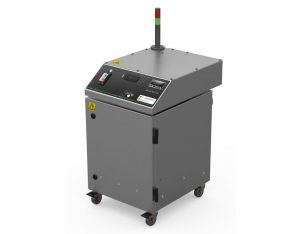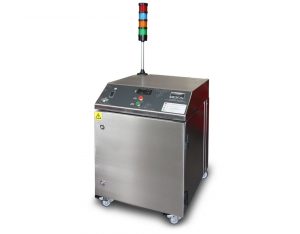Managing risk while maintaining laser processing line performance
 Speed of production and quality of output are vital in coding and labelling products both to optimise investment in technology and to meet the expectations of consumers.
Speed of production and quality of output are vital in coding and labelling products both to optimise investment in technology and to meet the expectations of consumers.
This drive for speed and perfection, as well as increased demand to process metals, has led to the growing application of fibre lasers in the precision marking, cutting, and coding of products and packaging in the FMCG market. This enables a high-volume FMCG (fast-moving consumer goods) business to code at speeds of around 120,000 beverage cans per hour.
Besides this increase in throughput, manufacturers have adopted laser technology because it offers operating cost benefits over other coding/marking processes and the finished mark is more durable and less susceptible to moisture degradation. However, the high-energy laser source can present a thermal risk when cutting flammable materials if appropriate mitigation measures are not in place.
As Josh Evans, Applications Engineer at BOFA, explains: “Fibre laser processes can generate very small particles which, if not properly controlled, can collect around the laser head, as well as the ducting and filters. These particles can be highly flammable, so manufacturers need to ensure that their extraction systems are maintained to keep the area around the laser free from airborne contaminants and to reduce the risk of an ignition source coming into contact with flammable material before it has had a chance to burn out.”
Operators can take a number of actions to help reduce the possibility of a thermal event as part of their overall health and safety strategy:
- Undertake a risk assessment of the process to understand any potential risks and define any mitigation actions.
- Educate operatives so that they understand any risks and the protective measures put in place.
- Provide comprehensive guidance on the mitigation process should a thermal event occur.
 Implement a rigorous maintenance schedule to ensure the laser area and ducting remain clear of contaminants, for example by ensuring there is adequate air velocity through the ducting to optimise filtration effectiveness.
Implement a rigorous maintenance schedule to ensure the laser area and ducting remain clear of contaminants, for example by ensuring there is adequate air velocity through the ducting to optimise filtration effectiveness.
To assist in risk reduction, BOFA has also developed a Spark Arrestor 2, which helps to prevent potentially damaging, incandescent particulate from entering the fume extraction unit by transporting emissions through specially designed impingement plates so that hot embers dissipate their heat.

If further measures are needed, in certain circumstances, companies can consider installing the FireBOX GA, for general applications, and the FireBOX MA, for metal applications. This is a self-extinguishing inline pre-filtration system that can be positioned in advance of the fume extraction unit. The FireBOX incorporates a temperature controller, which automatically switches off the extraction system power and closes electronic valves should the pre-set ambient temperature be exceeded by 10°C. If the temperature rises another 10°C in the FireBOX then the integrated fire extinguisher will be activated.
John Twigg, International Sales Manager at BOFA, commented: “These technologies help to counteract the thermal risks in lasering, particularly where a combustible dust can be generated by the process. While thermal events are rare, aside from the potential risk to human health, any such incident will inevitably lead to a disruption in production and can require the replacement of equipment.”
Have you considered the potential thermal risks in your workplace? Watch our latest video to see how these potential risks could arise and how to best mitigate them. For more information, get in touch with your local BOFA representative.


